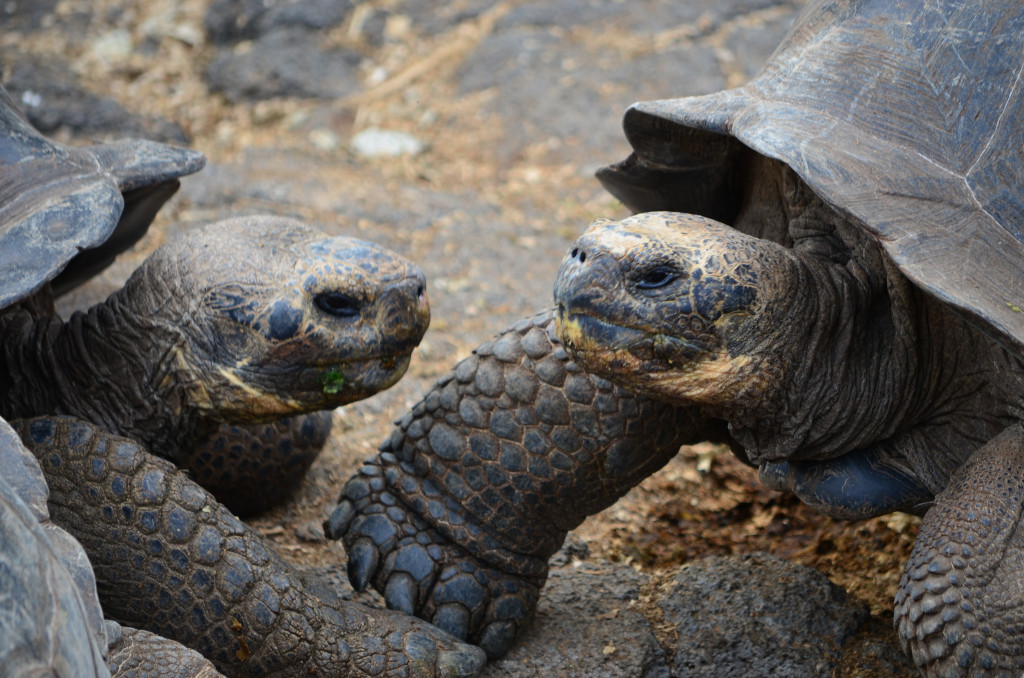
The abundance of introduced plant species on the Galapagos Islands started to ramp up in the 1930s when highland areas were cleared of native vegetation for agriculture. This has been an increasing problem ever since.
Meanwhile, many native species have struggled since people started frequenting the islands in the 19th century. Most notable of these are the famous giant tortoises. A number of subspecies of Galapagos tortoises are endangered; some, like the Pinta Island subspecies, whose last representative was known as Lonesome George, have gone extinct.
Surprisingly, a recent study of tortoises on Santa Cruz Island has shown that introduced plants are actually having a very positive effect on the tortoise population. Two subspecies are eating introduced plants for half of their diet and, furthermore, these plants seem to benefit the tortoises nutritionally, helping them stay fit and healthy.
Guavas provide an example of what is going on. Native guava plants on Santa Cruz produce small fruits containing large seeds and a small amount of fairly bitter pulp covered by a thick skin. Introduced guava fruits are large and contain abundant sweet pulp under a thin skin. It is not too surprising that the tortoises favor the invaders.
The Galapagos Islands are one of the most carefully preserved natural environments in the world, but even there, a return to pristine conditions is not likely or practical. Given this fact, it is encouraging to learn that the changes introduced by humans may not be all bad news for some of the islands’ most charismatic inhabitants.
**********
.
Web Links
Endangered tortoises thrive on invasive plants
Photo, posted July 10, 2013, courtesy of Paul Krawczuk via Flickr.
.
Earth Wise is a production of WAMC Northeast Public Radio.
